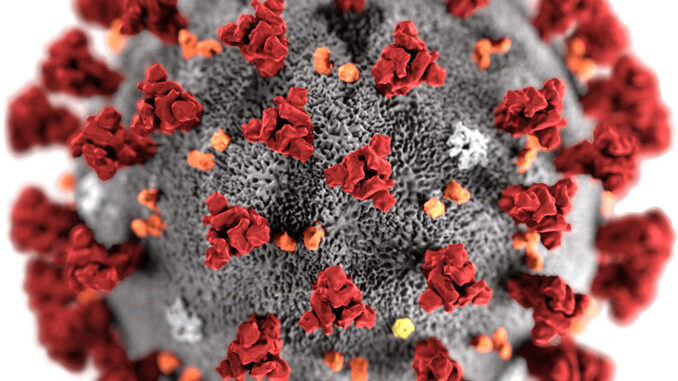
The COVID-19 Seroprevalence Studies Hub, known as COVID-19 SeroHub, is an online dashboard intended to help researchers and policymakers monitor studies of Severe Acute Respiratory Syndrome Coronavirus 2 (SARS-CoV-2) seroprevalence in the United States. These types of studies use blood tests to identify the proportion of people in the population who possess antibodies to SARS-CoV-2.
Seroprevalence is the number of persons in a population who test positive for a specific disease based on serology (blood serum) specimens — especially involving people with viral infections such as herpes simplex, HIV, and SARS-CoV-2. Seroprevalence is presented as a percentage of the total specimens tested or as a proportion per 100,000 persons tested. Since a positive confirmation of the occurrence of disease (diagnosis) is usually based upon the presence of antibodies for that disease, seroprevalence is not helpful for antibodies that are involved in more general responses.
Antibody (abbreviated AB), which is also known as an immunoglobulin (abbreviated Ig) is a large, Y-shaped protein that, when effective as part of the immune system, identifies foreign objects, such as pathogenic bacteria and viruses. An antibody can be classified as monospecific if it has specificity for the same antigen or epitope, or bispecific if it have affinity for two different antigens or two different epitopes on the same antigen. A group of antibodies can be called polyvalent (or unspecific) if they have affinity for various antigens or microorganisms.
Antigens consist of a molecule or molecular structure that is targeted by antibodies. An epitope is the part of an antigen that is recognized by antibodies.
SeroHub Goals:
Aim 1: To systematically identify published and ongoing SARS-CoV-2 seroprevalence studies.
Aim 2: To offer an interactive dashboard to visualize SARS-CoV-2 seroprevalence estimates over time and by geography, population, and other factors.
On the SeroHub dashboard there is a United States map that indicates the number of studies performed regarding seroprevalence for each state. As of December 1, 2020 there were two studies indicated from Illinois. The Lancet citation involved multiple states with Illinois included …
Studies Including Illinois (as of Dec. 1, 2020)
Anand S, Montez-Rath M, Han J, Bozeman J, Kerschmann R, Beyer P, Parsonnet J, Chertow GM. Prevalence of SARS-CoV-2 antibodies in a large nationwide sample of patients on dialysis in the USA: a cross-sectional study. Lancet. 2020 Sep 25;396(10259):1335–44. doi: 10.1016/S0140-6736(20)32009-2. Epub ahead of print. PMID: 32987007; PMCID: PMC7518804.
Vitalant Covid-19 Antibody Testing: Serosurveys Using Blood Donor Samples In Outbreak Regions, which was not cited on PubMed.gov. Vitalant (formerly Blood Systems Inc.) is a nonprofit organization that collects blood from volunteer donors and provides blood, blood products and services.
COVID-19 SeroHub is a collaboration of the Centers for Disease Control and Prevention, the National Cancer Institute and National Institute of Allergy and Infectious Diseases, part of the National Institutes of Health.
According to the Centers for Disease Control COVID-19 Seroprevalence surveys can help determine the percentage of people infected.
A person that is infected has detectable level of antibodies in 1-3 weeks, some people may take longer than 3 weeks to develop antibodies, and some people may not develop antibodies. As of early December 2020, it is currently unknown how long antibodies are detectable after infection.
A seropositive result from this test of SARS-CoV2 antibodies may mean that a person was previously infected with the virus.
The percentage of individuals in a population who have antibodies to an infectious agent is called seroprevalence.
A seroprevalence survey uses the antibody tests to estimate the percentage of people in a population who have antibodies against SARS-CoV-2. A small sample of people participating in the survey represents a larger population, which could be a community, state, or special population (like healthcare workers or pregnant people).
See also …
COVID-19 SeroHub
For more information about specific antibodies, see … Immune Deficiency Foundation | Specific Antibody Deficiency
Get updates from The Cardinal ALL NEWS FEEDS on Facebook. Just ‘LIKE’ the ‘Arlington Cardinal Page (become a fan of our page). The updates cover all posts and sub-category posts from The Cardinal — Arlingtoncardinal.com. You can also limit feeds to specific categories. See all of The Cardinal Facebook fan pages at Arlingtoncardinal.com/about/facebook …
Help fund The Cardinal Arlingtoncardinal.com/sponsor
